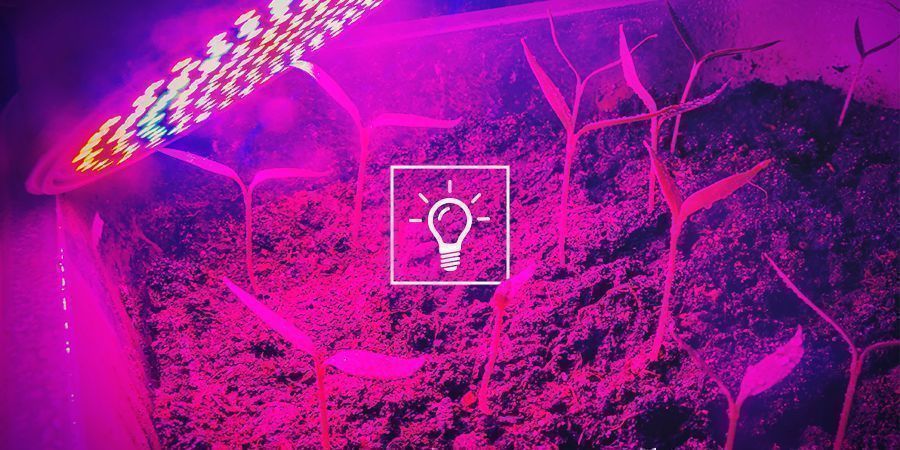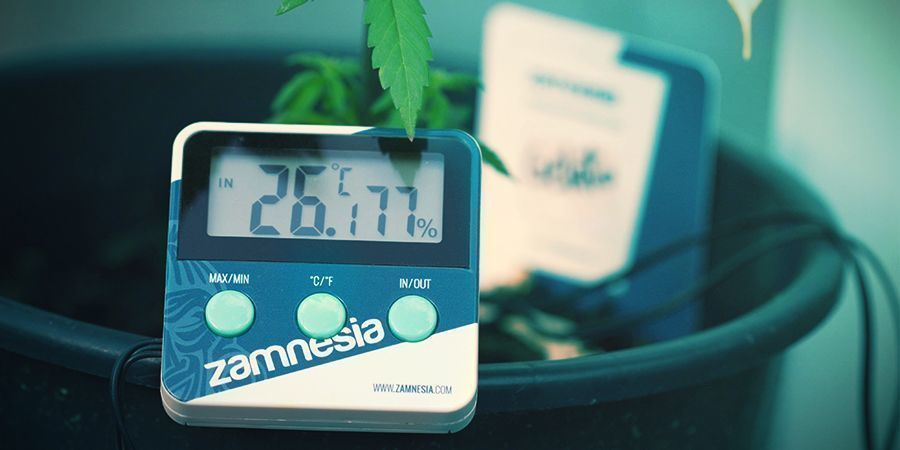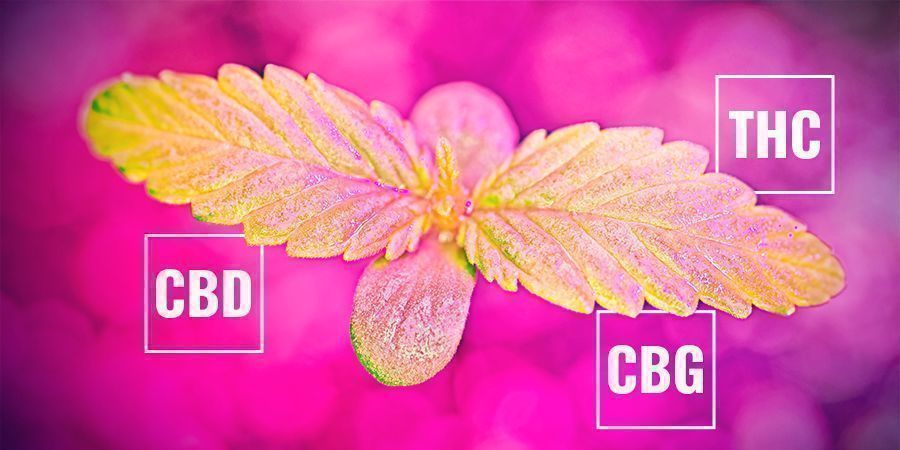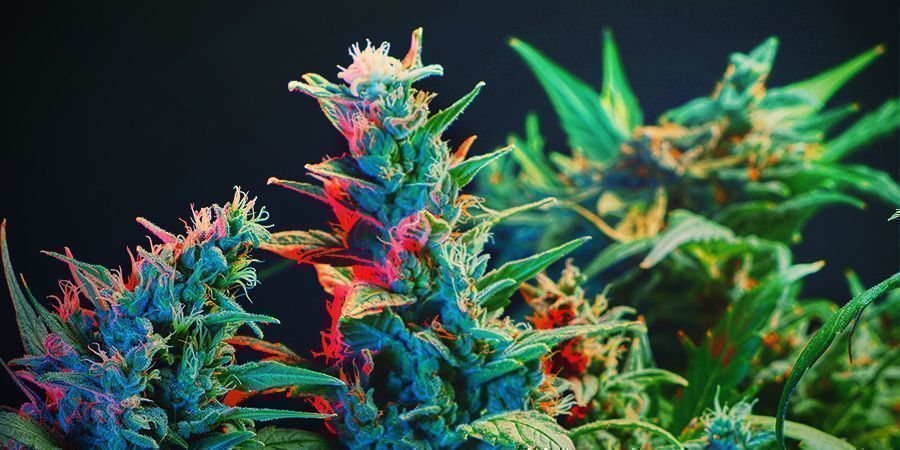Cannabis And Photosynthesis
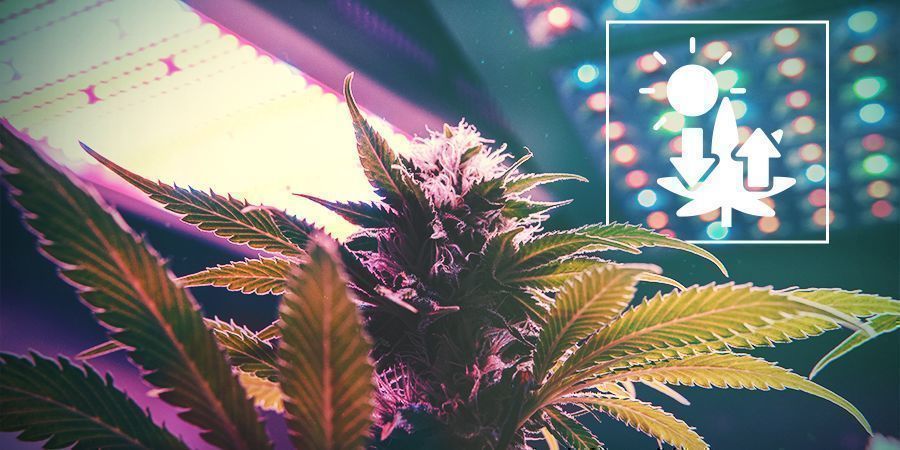
You probably remember the term “photosynthesis” from biology class. Most people, however, lose the need to remember the process it describes—until they start growing cannabis! In this article, we’ll delve into the process of photosynthesis, how light quality can affect this process, and how it might alter cannabinoid production.
Cannabis plants require multiple external resources to grow properly. They need nutrients to make proteins, build cell walls, and facilitate biochemical processes. They need water to dissolve and transport these molecules. All of these factors contribute to the healthy growth and development of a plant. But the main driving factor responsible for growth can’t be found in a bottle or dug out of a compost bin. Instead, it comes from the sun (or a powerful set of lightbulbs). Let's dive into the details of this essential process.
WHAT IS PHOTOSYNTHESIS?
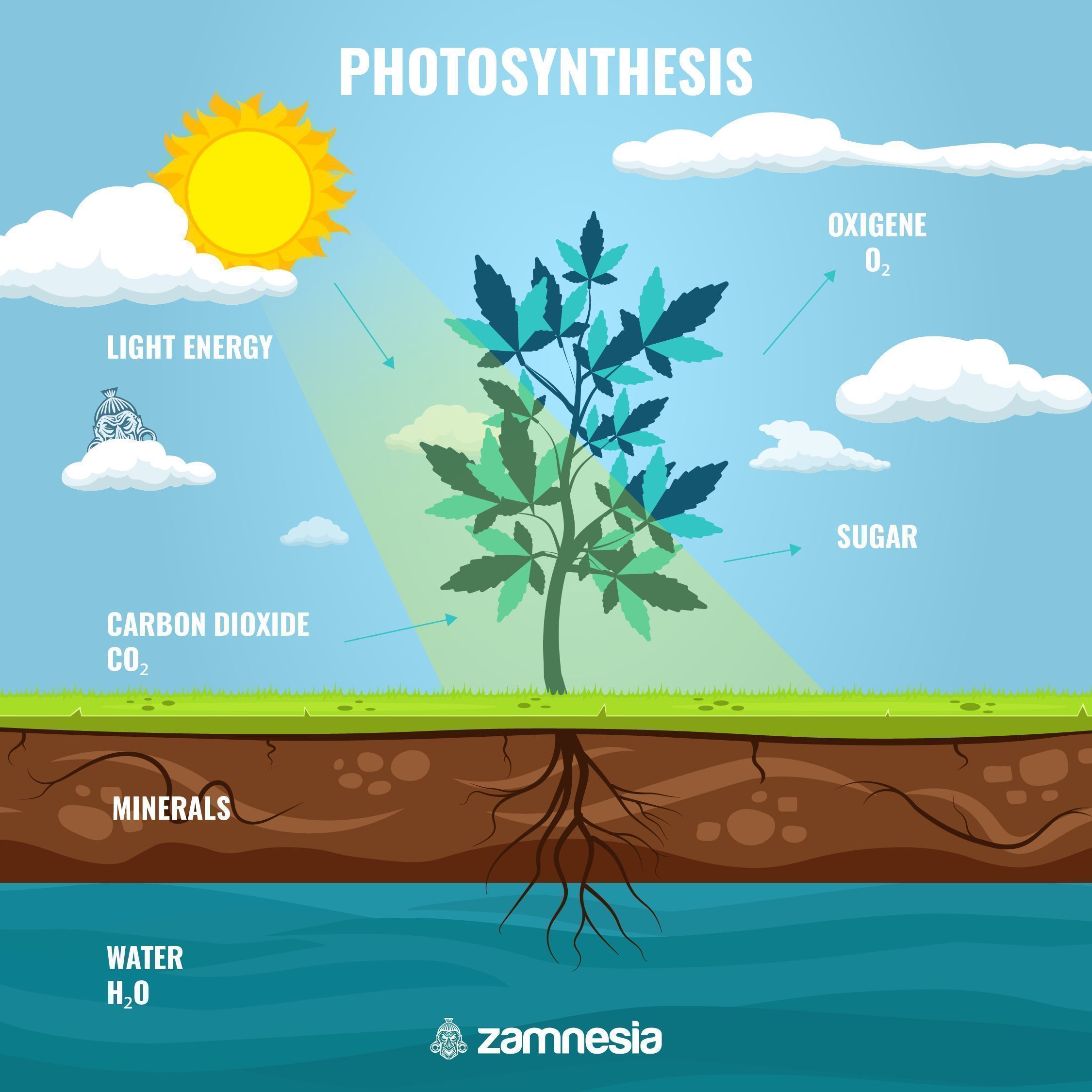
The meaning of photosynthesis is present in the word itself. “Photo” means light, and “synthesis” refers to the creation of an organic compound. Indeed, plants convert light into biochemical energy to survive. But how do they achieve this? Well, they’re equipped with some impressive biological machinery. To understand this process properly, we’re going to have to journey to the cellular level.
Photosynthesis primarily takes place within the leaves. More specifically, it occurs in specialised cells known as mesophyll cells. These cells form a layer just below the surface of the leaf where they work to capture light. They contain small organelles called chloroplasts, which are rich in the pigment chlorophyll—the chemical that gives plants their green appearance. As a pigment, chlorophyll has the ability to absorb light. Plants stash the molecule in pillar-like structures called thylakoids. The space between these structures is known as the stroma.
Photosynthesis occurs in two major phases: light-dependent reactions and light-independent reactions. The first step of the light-dependent reactions involves carbon dioxide (CO₂) and water (H₂O) entering the leaf. CO₂ enters through small openings known as stomata, and transpiration draws water up through tunnels called xylem.
Next, photons generated by the sun (or your grow lights) slam into chlorophyll molecules. Electrons absorb the energy and become “excited”. A series of light-dependent reactions then occur, which ultimately results in the storage of energy in the form of ATP (the cellular currency of energy) and NADPH (an electron carrier). All of this action takes place in the thylakoid membrane.
These molecules are then used in the so-called Calvin cycle (a.k.a light-dependent reactions), which takes place in the stomata. They are used to “fix” carbon dioxide and make three-carbon sugar molecules. These are then combined to form our sweet, sugary friend glucose. This simple molecule is used by plants for energy and to make larger structural carbohydrate molecules.
LIGHT QUALITY: WATTAGE, LUMEN, PAR, AND PPFD
So, we’ve touched upon why plants need light to conduct photosynthesis. But, are some lights better than others? The answer is yes. In most regions of the world, photons from the sun are more than enough to drive photosynthesis. However, indoor growers will need a lighting setup that provides enough energy to keep plants thriving.
There are many different kinds of indoor grow lights available; LED, HID, and fluorescents are a few examples. Each of these types has its own advantages and disadvantages, but overall light quality is the most essential factor.
Wattage
You’ll need to pay attention to the wattage—the amount of electrical power—when you’re shopping around for lights. If the wattage is too low, the light source won’t emit enough light for optimal plant development. Lights that produce anywhere between 400–600W/m² are enough to provide satisfactory home harvests. Lights that produce 1000W+ per m² will push bud production to the limit.
Lumen
Growers can determine light quality through several measurements. First and foremost, a lux meter can be used to analyse how much light a particular area of a grow space is receiving. Lux is a measurement of lumens—the amount of light emitted from a device—over a given area. Lux meters measure the type of light that can be detected by the human eye; therefore, they don’t give a specific measurement regarding the amount of plant-available light. But, they’re enough to give home growers an idea of how much light their crop is getting. Aim to provide your plant with around 40,000 lux during the vegetative phase, and 60,000 lux during the flowering phase.
PAR and PPFD
Lux sounds useful, but what if you want to know the exact growing power of a particular lamp? This is where PAR (photosynthetically available radiation) comes into play. PAR is light within the 400–700nm range that plants use to conduct photosynthesis. The unit for measuring PAR—micromoles per second (μ/mol/s)—tells growers how many photons within this range collide with their plant's leaves each second. This is known as PPFD (photosynthetic photon flux density).
PAR can be measured using a PAR meter. These devices use sensors to detect light within the 400–700nm range. An average PPFD can be obtained by taking measurements at different areas of the canopy at the same height. Aim for approximately 350μ/mol/s during the vegetative phase, and 850μ/mol/s during flowering.
Light manufacturers should provide this information. For true PPFD data, be sure that the company supplies you with the distance between the canopy and the light source, several measurements, an average, and the min:max ratio.
OPTIMAL CONDITIONS FOR PHOTOSYNTHESIS
Light intensity isn’t the only condition that can ramp-up photosynthesis. Research has found that temperature and carbon dioxide can also enhance the process.
Photosynthesis depends on several enzymes to carry out biochemical reactions. These proteins cannot work efficiently during cold temperatures (0–10°C), which decreases photosynthetic rate and eventually results in stunted growth. Likewise, high temperatures (above 20°C) also hamper these critical enzymes. They perform best within a temperature range of 10–20°C.
Interestingly, CO₂ allows cannabis plants to thrive in slightly warmer temperatures. Elevated levels of the gas can also help to boost photosynthesis in conjunction with powerful lights. The more light a leaf is exposed to, the more carbon is required to convert the energy into sugars. If you’re running 600W lights in a relatively small space, you’ll have enough power to warrant boosting CO₂ levels. Growers can push CO₂ to the optimal range of 1,500–2,000ppm using CO₂ tanks. However, an easier option is to add dissolvable tabs into the soil.
HOW PHOTOSYNTHETIC RATE MIGHT AFFECT CANNABINOID CONTENT
It makes sense that a higher photosynthetic rate would allow plants to produce more energy and increase cannabinoid output. There’s not much research on this topic, and there appears to be a lot of nuance involved. For example, a study showed that several ecotypes of cannabis demonstrated an increased photosynthetic rate in a warmer climate, but increased in cannabinoid content when grown in cooler temperatures. More research is needed to paint a clear picture.
It’s also known that plants produce varying cannabinoid profiles when placed under different lights at the same light intensity. Research shows that HPS (high-pressure sodium) lights produced more flowers by dry weight, whereas LED produced higher levels of cannabinoids CBG, THC, and CBD.
IS THERE A DIFFERENCE BETWEEN PHOTOPERIOD AND AUTOFLOWERING STRAINS WHEN IT COMES TO PHOTOSYNTHESIS?
Photoperiod and autoflowering strains respond differently to light. Both varieties photosynthesise in the exact same way, but photoperiod strains require a change in the light cycle to flower. Growers typically keep photoperiods on a light schedule of 18 hours on and 6 hours off during the vegetative phase. A shift to 12 hours on and 12 hours off then forces them to start flowering. They’ll remain in the vegetative phase indefinitely if they receive more light than this.
In contrast, autoflowering strains flower regardless of environmental cues. They can tolerate a light cycle of 24 hours on for their entire life and still produce buds. This means that autoflowering strains have more of an opportunity to conduct photosynthesis during the flowering phase. However, they still need a period of darkness to respire. The optimal schedule for indoor autos is 20 hours on and 4 hours off for the entire growing cycle.








 United States
United States

